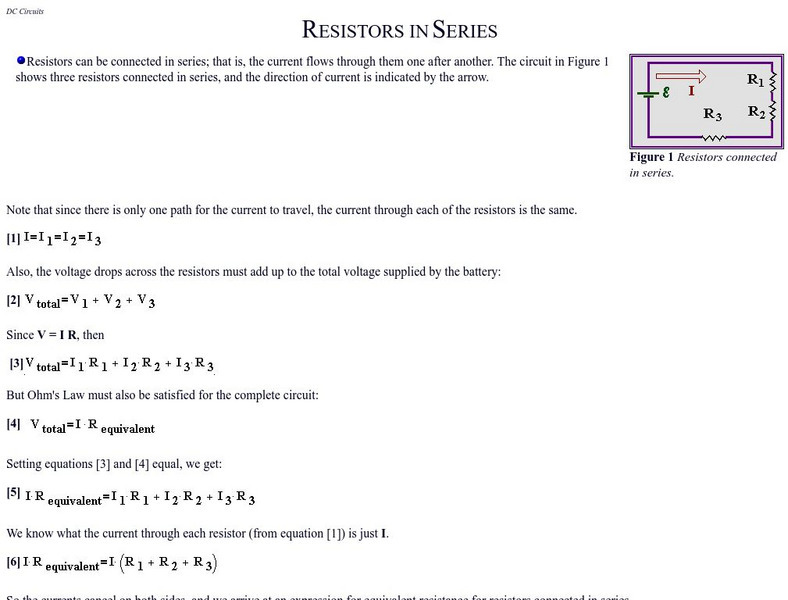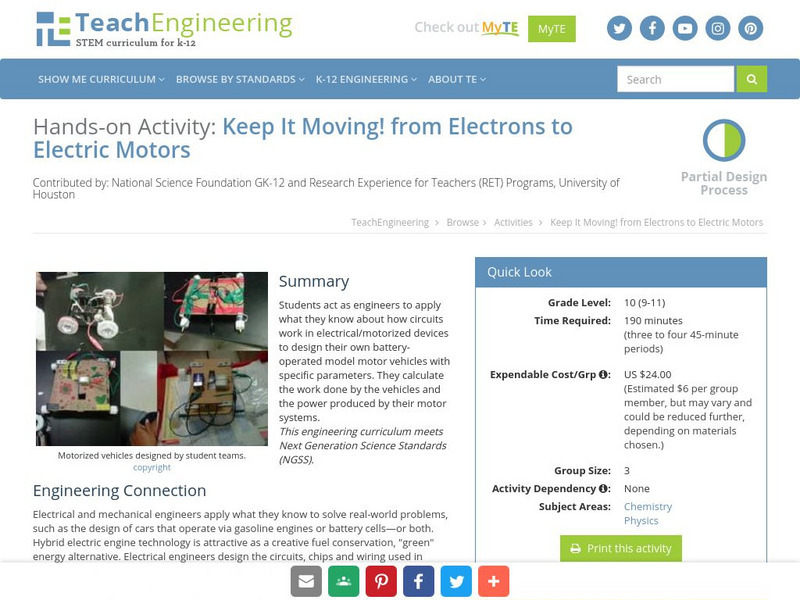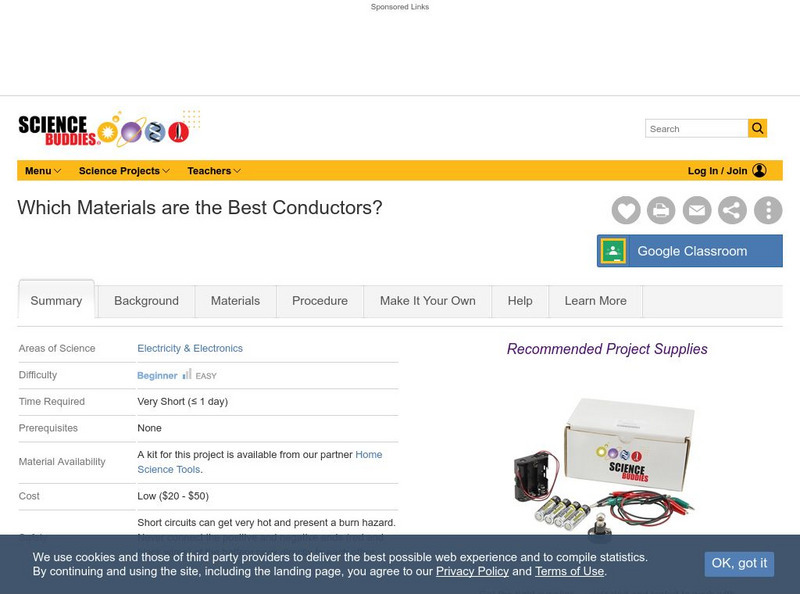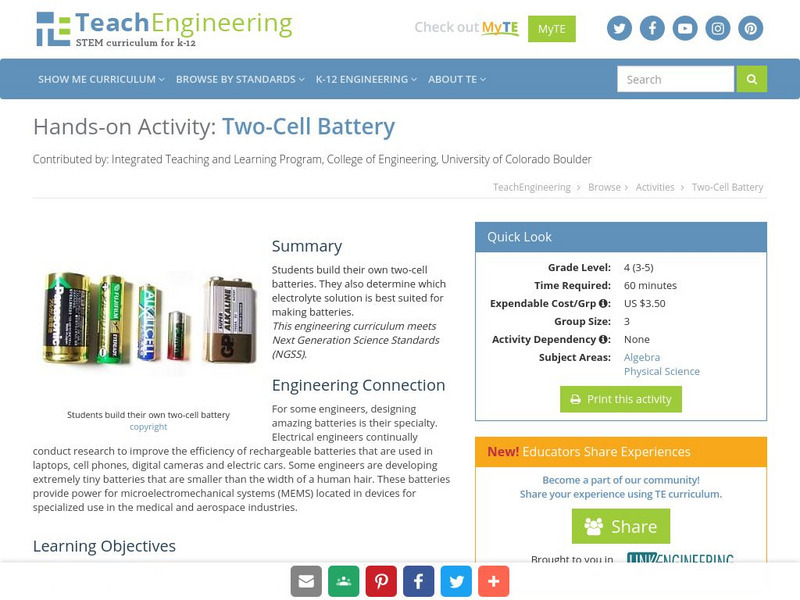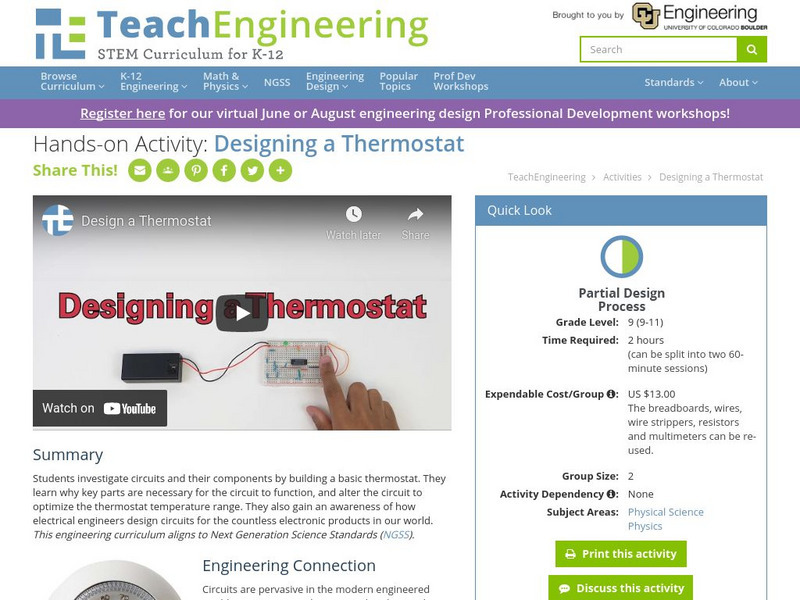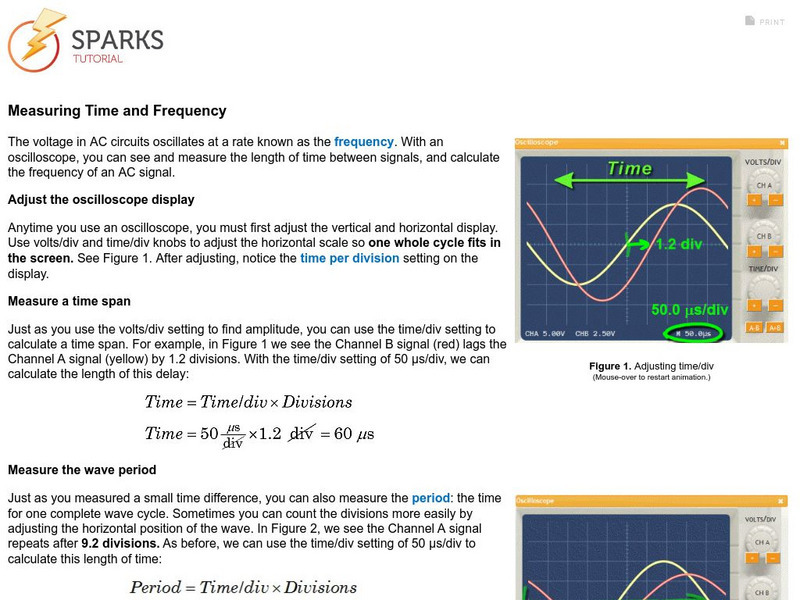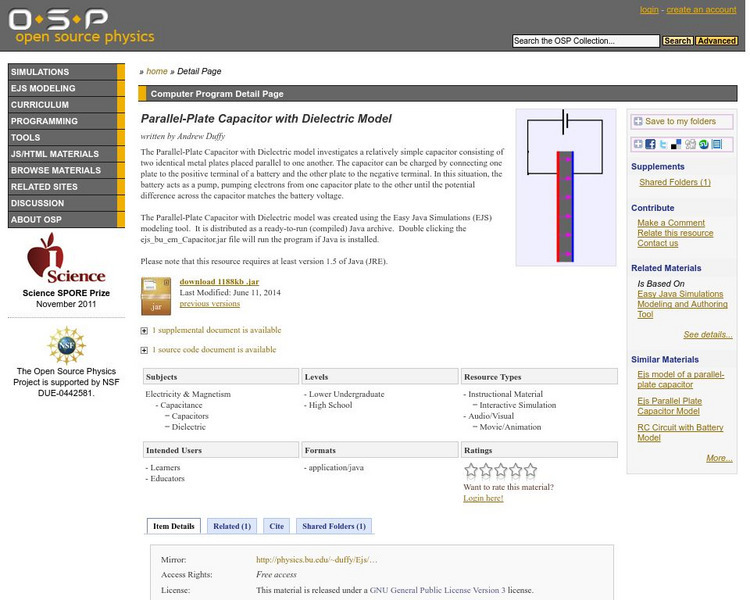Hi, what do you want to do?
University of Guelph
University of Guelph: Physics Tutorials: Dc Circuits: Resistors in Series
Explains and illustrates the meaning of series connections. Discusses the voltage-current-resistance relationships for series connections of resistors. An example problem on series calculations can be accessed from this page.
University of Guelph
University of Guelph: Physics Tutorials: Dc Circuits: Resistors in Parallel
Explains and illustrates the meaning of parallel connections. Discusses the voltage-current-resistance relationships for parallel connections of resistors. An example problem on parallel calculations can be accessed from this page.
TeachEngineering
Teach Engineering: Keep It Moving! From Electrons to Electric Motors
Students act as engineers to apply what they know about how circuits work in electrical/motorized devices to design their own battery-operated model motor vehicles with specific paramaters. They calculate the work done by the vehicles...
Science Buddies
Science Buddies: Project Ideas: Which Materials Are the Best Conductors?
A simple science fair project to test whether electricity can flow between two things. The Science Buddies project ideas are set up consistently beginning with an abstract, objective, and introduction, followed by a section on terms,...
TeachEngineering
Teach Engineering: Two Cell Battery
In this hands-on activity, students build their own two-cell battery. They also determine which electrolyte solution is best suited for making a battery.
TeachEngineering
Teach Engineering: Designing a Thermostat
Students investigate circuits and their components by building a basic thermostat. They learn why key parts are necessary for the circuit to function, and alter the circuit to optimize the thermostat temperature range. They also gain an...
TeachEngineering
Teach Engineering: Sensing Air Pollution
Students learn about electricity and air pollution while building devices to measure volatile organic compounds (VOC) by attaching VOC sensors to prototyping boards. In the second part of the activity, students evaluate the impact of...
Science Buddies
Science Buddies: Put Some Energy Into It! Use a Calorimeter to Measure
In this science fair project, use a calorimeter with an attached heating element to measure how water responds to added thermal energy.
NC State University
The Engineering Place: Battery Making
Using simple materials, students will learn how to create batteries, and about the relationship between voltage and current.
Physics Aviary
Physics Aviary: Practice Problems: Internal Resistance of Battery Problem
Determine the internal resistance of a battery based on the graph of terminal voltage vs. current. Also find the maximum current and the electrochemical potential.
Physics Aviary
Physics Aviary: Ohm's Law
This lab is designed to have students investigate the relationships between voltage, resistance and current in a circuit with only one passive component. This version of the lab requires students to read analog meters to get the voltage...
CK-12 Foundation
Ck 12: Physics: Electrical Systems Study Guide
A study guide covering electrical systems.
Texas Instruments
Texas Instruments: Discovering Ohm's Law
In this activity, students use voltage and current probes to investigate Ohm's Law. The students collect data and use their graphing calculators to perform data analysis and "discover" Ohm's Law.
CK-12 Foundation
Ck 12: Physics Simulation: Ac Transformer
[Free Registration/Login Required] Learn about how high-voltage alternating current (AC) electricity generated by a power station is converted into low-voltage AC electricity for your home using this interactive simulation. A PDF...
Concord Consortium
Concord Consortium: Measuring Time and Frequency
The voltage in AC circuits oscillates at a rate known as the frequency. With an oscilloscope, see and measure the length of time between signals, and calculate the frequency of an AC signal.
Science Struck
Science Struck: Lcr Meter Working Principle and Uses
Explains what an LCR meter is and how it is used to measure the inductance, capacitance, and resistance of a circuit. Lists the different parameters of a circuit that it measures, describes two types of LCR meters, and gives definitions...
Khan Academy
Khan Academy: Application of the Fundamental Laws
We solve a circuit by direct application of the fundamental laws: Apply element laws (Ohm's Law and the like) plus Kirchhoff's Laws to solve for the currents and voltages of a circuit.
Khan Academy
Khan Academy: Resistors in Series and Parallel Review
Review how to find the equivalent resistance for resistors in parallel and series configurations. Recall the current and voltage properties of series and parallel configurations of resistors.
TryEngineering
Try Engineering: Series and Parallel Circuits
The core of this lesson is simple circuits and the differences between parallel and series circuit design. Students perform experiments to test the differences between the two circuit designs using low voltage light bulbs.
American Association of Physics Teachers
Com Padre Digital Library: Open Source Physics: Parallel Plate Capacitor
A simulation investigating a parallel-plate capacitor which is charged by connecting one plate to the positive end of a battery, and the other plate to the negative end. The battery sends electrons from one capacitor plate to the other...
Physics Aviary
Physics Aviary: Internal Resistance of Battery
This lab is designed to have students look at the change in the terminal voltage of a battery that occurs as you draw more current from the battery.
Science and Mathematics Initiative for Learning Enhancement (SMILE)
Smile: Electromagnets
This lesson plan contains several activities designed to help the student understand the magnetic effects of an electrical current.
Museum of Science
The Atom's Family: Fruity Electricity
Frankenstein's electricity is out. In this activity, students help him find another source of energy using citrus fruit. Good for students who want to do their own projects or for class lessons.
Concord Consortium
Concord Consortium: Sparks Tutorial: Using an Oscilloscope
Learn how to use an oscilloscope.





